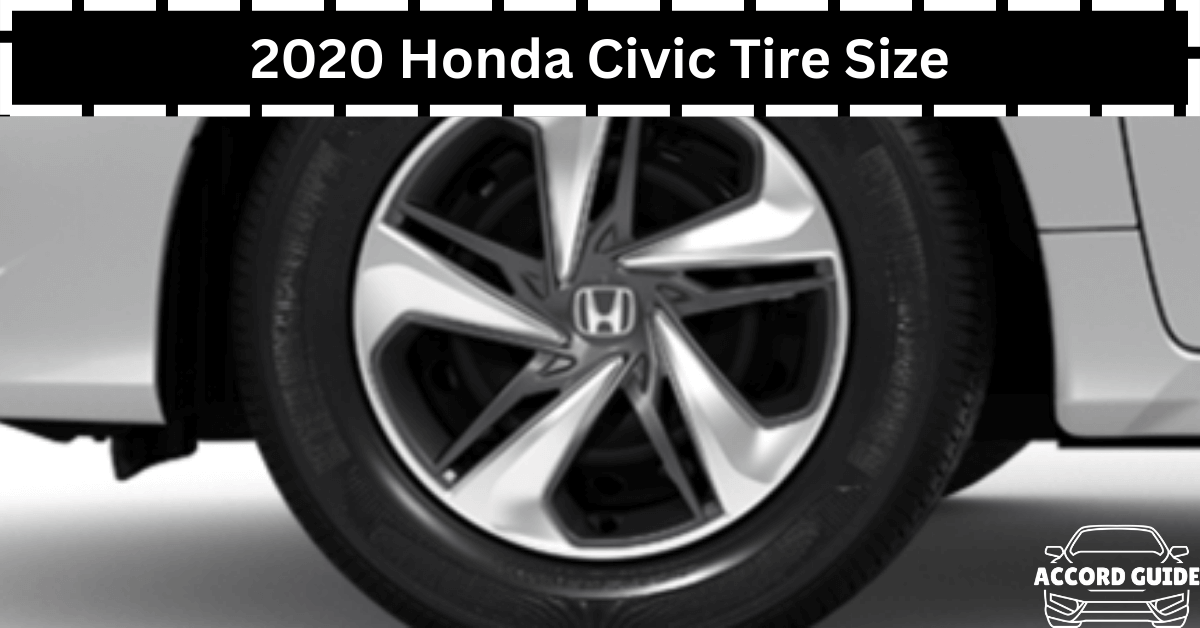The 2020 Honda Civic offers drivers a range of tire sizes spanning 16-inch, 17-inch, 18-inch, and 20-inch wheel diameters. Tire sizes vary based on which Civic trim package is selected. Most standard configurations use 16-inch or 17-inch tires, while larger wheel and tire upgrades are available on higher trims.
Knowing the exact 2020 Honda Civic tire size specifications can help buyers pick the right trim for their needs. Larger wheel and tire combinations generally provide more grip and sportier handling, while smaller diameters prioritize ride comfort and fuel efficiency.
Tire Sizes By Trim
Honda offers the 2020 Civic in a variety of configurations spanning coupe, sedan, and hatchback body styles. Across the model range, five different tire sizes and four wheel sizes are offered.
The available 2020 Honda Civic tire sizes include:
- P215/55HR16
- P215/50HR17
- P235/40WR18
- P235/40YR18
- P245/30YR20
Wheel diameters consist of:
- 16 x 7 inches
- 17 x 7 inches
- 18 x 8 inches
- 20 x 8.5 inches
Here is a breakdown of which tire and wheel combinations come equipped on each 2020 Honda Civic trim package:
LX Trims
The base LX trim of the 2020 Civic comes equipped with 16-inch wheels and P215/55HR16 tires for coupe, sedan, and hatchback models. This standard configuration prioritizes ride comfort and fuel efficiency.
LX Tire Size: P215/55HR16
LX Wheel Size: 16 x 7 inches
EX Trims
Moving up to the EX mid-level trims equips the Civic with 17-inch wheels and P215/50HR17 tires. The slightly lower profile tires offer marginally better handling than the LX while maintaining a comfortable ride.
EX Tire Size: P215/50HR17
EX Wheel Size: 17 x 7 inches
Sport Trims
Performance-focused Sport trims of the 2020 Civic upgrade to 18-inch wheels with P235/40WR18 tires. The increased wheel width and shorter sidewall of the Sport trims provide noticeably sharper steering response and grip.
Sport Tire Size: P235/40WR18
Sport Wheel Size: 18 x 8 inches
Touring Trims
Top-of-the-line Touring packages also use 18-inch wheels, but are equipped with P235/40YR18 tires that have a slightly different sidewall construction. Performance is similar to the Sport.
Touring Tire Size: P235/40YR18
Touring Wheel Size: 18 x 8 inches
Type R
The high-performance Type R model comes exclusively with 20-inch wheels and P245/30YR20 tires. The large diameter wheels and ultra-low-profile tires optimize handling abilities, at the expense of ride comfort.
Type R Tire Size: P245/30YR20
Type R Wheel Size: 20 x 8.5 inches
Tire Size Recommendations
With multiple 2020 Honda Civic tire sizes to choose from, selecting the right option comes down to individual priorities.
Here are some recommendations based on driving needs:
- For a smooth, quiet ride, the 16-inch tires of LX trims are ideal. Fuel economy is also excellent with the taller sidewall tires.
- The 17-inch tire and wheel package on EX models add a bit more handling sharpness while maintaining decent ride comfort.
- Moving up to the 18-inch Sport and Touring tire and wheel combination provides a nimble, responsive feel that enthusiasts will appreciate.
- For maximum cornering grip and performance, the Type R’s 20-inch low-profile tires are unmatched, but ride quality is most compromised.
- For all-season use, all-season tires are recommended to maintain grip in cold weather and rain. Summer tires on Sport and above trims give the best warm weather grip but are not optimal for winter conditions.
In summary, larger wheel diameters and shorter sidewalls favor sporty handling, while smaller wheels prioritize ride comfort. Tire compounds and tread patterns also affect overall performance. Consider test driving Civic trims with different tire sizes to determine the best fit.
Frequently Asked Questions
Does Tire Size Affect Fuel Economy In The 2020 Honda Civic?
Yes, tire size does impact fuel efficiency. The most fuel-efficient configurations use 16-inch or 17-inch tires, which create less rolling resistance. The performance-oriented 18-inch and 20-inch tire and wheel packages will provide slightly worse fuel economy, due to more mass and larger tire contact patches.
How Much Does The 2020 Civic’s Tire Size Affect Ride Quality?
Ride quality is directly related to tire size on the 2020 Civic. The 16-inch and 17-inch options have more sidewall which absorbs bumps and imperfections better. The lower profile 18-inch and 20-inch tires trade comfort for sharper handling and steering response.
Is A Tire Size Upgrade Worth It On The 2020 Civic?
It depends on driver priorities. Moving up one size to the 17-inch EX wheels offers a modest improvement in grip and steering feel while maintaining good ride quality. Jumping all the way to the 20-inch Type R rubber is mainly for hardcore enthusiasts who want incredible cornering abilities.
Should Snow Tires Be The Same Size As The Original Tires On The 2020 Civic?
For best performance, snow tires should match the 2020 Honda Civic’s original tire size. A narrower snow tire can be used in an emergency situation but may negatively impact handling. Tire chains should also be properly fit for the Civic’s OE tire size.
What Is The Lug Nut Torque Specification For 2020 Civic Wheels?
Honda specifies a lug nut torque of 80 lb-ft for the alloy wheels equipped on the 2020 Civic. Properly torqued lug nuts are essential to keep the wheels securely fastened and avoid safety issues.
Conclusion
When shopping for a new 2020 Honda Civic, understanding the tire sizes for each trim level is key. With configurations ranging from economical 16-inch wheels to aggressive 20-inch performance rubber, buyers can select the best tire and wheel combination for their needs. Checking the tire size specifications of the Civic is an important step in choosing the ideal options package.
Also Read:
- 2022 Honda Civic Tire Size
- What Size Tires Are On A 2018 Honda Civic?
- What Size Tires Are On A 2019 Honda Civic?
- What Size Tires Does A 2003 Honda Civic Have?


